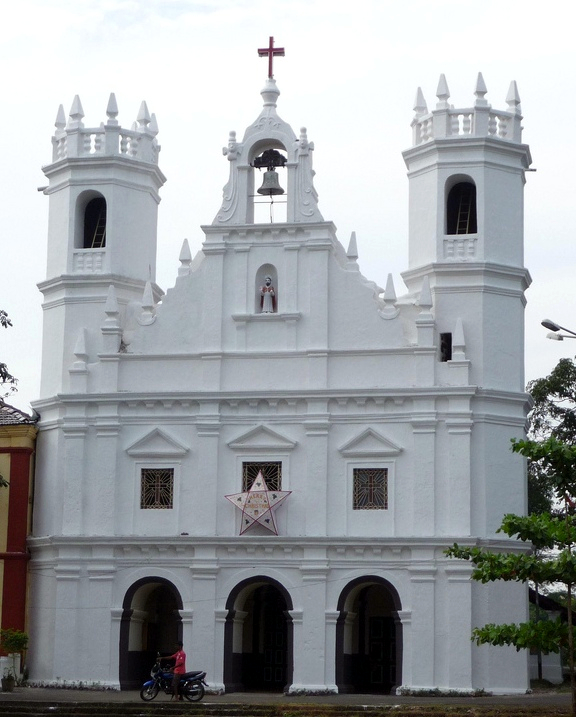According to the Archdiocese of Goa and Daman Directory of 2023-2024, it has a catholic population of around 1,780, who celebrated the feast on August 6 with great religiosity

The church in Salvador do Mundo, dedicated to ‘The Saviour of the Word’ (Salvador do Mundo), is located on the roadside between Penha de Franca and Pomburpa. According to the Archdiocese of Goa and Daman Directory of 2023-2024, it has a catholic population of around 1,780, who celebrated the feast on August 6 with great religiosity. The parishioners on this day celebrate the ‘Konsanchem Fest.’
ORIGIN
The Church in Salvador do Mundo village was constructed by the Franciscan priests in 1565 with the cooperation of the ganvkars or the comunidades, during the tenure of the Guardian and Commissioner Fr Francisco de Salvador.
It is presumed that the church was given this name after Frei Francisco Salvador, who was the superior of the Franciscan community then and caretaker of the village. It was the biggest Church in the whole of Bardez.
The Church has the following chapels under its jurisdiction: St Rita chapel (Donvaddo), St Anne chapel (Salem), Mãe De Deus chapel (Paetona) and St Sebastian chapel (Badem & Torda).
After the suppression of the religious orders in Goa, the parish was taken over by the diocese. The first diocesan priest was Fr Felix Fernandes. During the tenure of the parish priest, Fr Gualberto de Souza, the flooring of the Church, the ceiling walls, the light and the sound system was given a new and fresh look.
STRUCTURE
The façade is of neo-romantic style, having three bays and four storeys, two octagonal towers, with the bell in the central gable. Above the porch is the choir loft, a vaulted structure, which was used by the musicians and singers prior to Vatican II. As one enters the nave, to the left is an artistic picture of Mother Mary handing over the Rosary and cincture to St Francis of Assisi and St Dominic of Guzman. The six-sided pulpit, which originally belonged to the Seminary of Chorào, has representations of the Apostles Peter and Paul and the four Evangelists.
ALTARS
The main altar is dedicated to the Saviour of the World, whose life-sized statue occupies the centre of the retable, which has representations of a few mysteries of the life of Christ and that of the Franciscan saints.
At the main altar is a statue of Jesus in the tomb, which is carried to the Monte (mountain) which has a chapel dedicated to Our Lady of Piety, situated about 300 metres from the church. This image is taken to the chapel for the service on Good Friday and brought back to the Church after the service.
To the left side of the altar is a statue of St Rock and above it is a pelican bird. Below that the statue of Our Lady of Salvation is kept and also a ship with two masts. The church has four other altars: to the left are i) the Sacred Heart of Jesus, flanked by the images of the Sacred Heart of Mary and of St Joseph and above it is the image of St Francis Xavier, ii) Our Lady of Salvation, above the image is that of St Rock, to the right iii) St Anne, above its image is the image of St Sebastian and iv) Our Lady of Sorrows.
FEASTS
The church has two main feasts, one of the patron, i.e. Salvador do Mundo (Saviour of the World) on August 6, preceded by the nine-day thematic Novena. Prior to the Feast Mass, the parish priest along with the Confraria and the faithful move to the field where the corn is grown; he blesses it and reverently cuts the first sheaves with the small golden sickle.
People then follow suit, then move in procession to the church and offer them to the almighty. After the feast mass is the procession in the earmarked area, followed by the veneration. The other feast is that of Our Lady of Salvation, which is now celebrated on the Sunday following January 23.
(The writer is Superior at Casa Professa, Basilica of Bom Jesus in Old Goa)